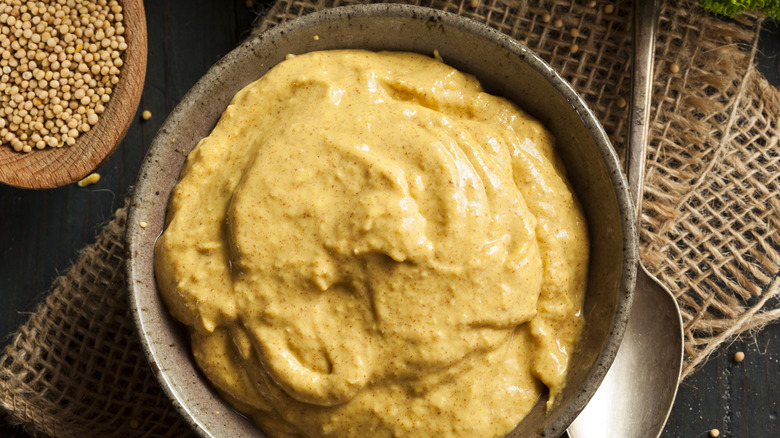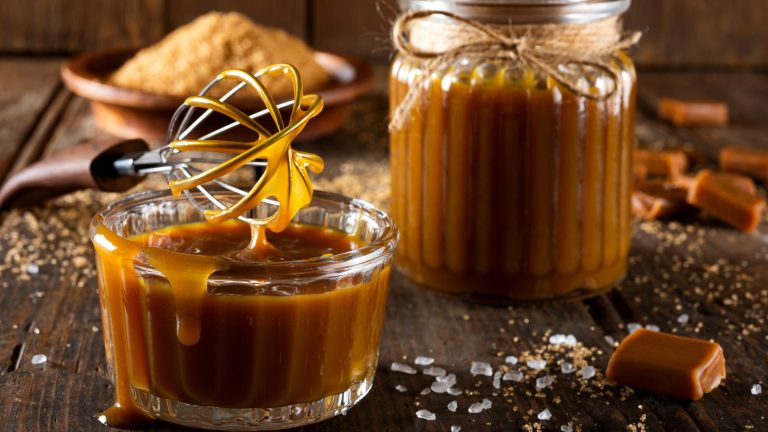From the early 20th century, Dijon mustard was the go-to as the mustard component of the classic mix of mustard, mayo, and paprika. Historical records aren’t clear as to why Dijon took this honored spot, but it’s likely that the sharp, slightly spicy, and tangy flavors that balanced the creamy butteriness and texture of the eggs contributed to its popularity. However, humans are experimental creatures, so over time, different mustards have been tagged in as alternatives to Dijon, with a multitude of ingredient mixes being used to make these time-honored hors d’oeuvres. While there aren’t any mustards that are straight-up terrible in deviled eggs, there’s one type that you should try to avoid if you want the tastiest deviled eggs: spicy brown mustard.
While classic deviled eggs were originally a little spicy (hence the name, and why Djon’s slight tang works so well), overly hot spicy brown mustard can completely overpower all the other ingredients, including the eggs. This mustard is made from brown mustard seeds. Though they aren’t the hottest seeds around, they are often soaked in lower volumes of vinegar, so the acidity can’t temper the heat. So, you’re left with a burning mouthful and no layered-and-delicious flavors from your deviled egg mix. This type of mustard is most often used with foods that need a flavor punch to raise the bar, like hot dogs, burgers, or robust meats like pastrami and salami.
Other mustards to avoid and which to use
Sweet mustards are another type to avoid with your deviled eggs. They impart a similar effect on the palate, just on the sweeter side. These mustards are usually made with brown or yellow mustard seeds — the latter being far milder — but with honey, sugar, or maple syrup added. Sometimes, condensed milk is used. Sugar has the ability to dominate all other flavors, including spiciness, so the other flavors you’ve added to your deviled egg filling will be totally lost.
Then you have your commercial mustards. These are produced in bulk and so often contain preservatives and artificial colorants, which can give them that “machine-made” flavor. While this won’t overpower your complex deviled egg flavor profile, it could add that less natural hint to your deviled egg mix, which kills the overall experience.
Look for a milder yellow mustard, either with a touch of spice or a touch of sweetness. We’ve spent some time with yellow mustards, so this list of ranked yellow mustard brands may help you in the search for your ideal deviled egg mustard. Don’t forget to be creative with your deviled eggs. Take that experimental human nature to heart and try different flavor pairings with your mustard — from avocado and cilantro to blue cheese and celery. Or get fancy and mix some truffle oil and black truffle shavings in your mix for a gloriously rich and decadent option.






